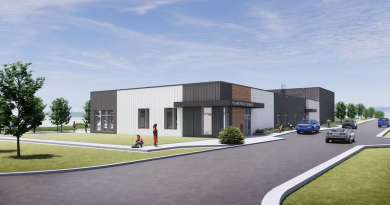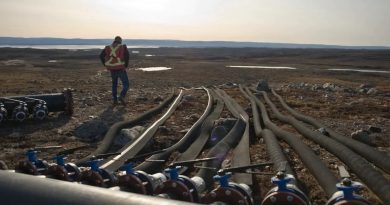Why vaccinating communities in Arctic Quebec presents a delicate challenge

The logistics of inoculating people in regions that are accessible only by air are daunting
Remote northern communities can be found near the top of the Quebec government’s list of vaccination priorities, just behind CHSLDs, health-care workers, and seniors’ homes.
There are excellent reasons for that: vulnerable elderly people and a high prevalence of chronic illness, scant health-care resources, and a system that is more easily overwhelmed. But the challenges are also many.
For one thing, getting a supply of stable vaccine to some areas that are accessible only by air, and then getting people to the vaccination location, requires plenty of advance planning.
That’s why public health officials in Nunavik, which along with the James Bay region has been circled as a specific priority area by the provincial committee that established the criteria for the rollout, aren’t expecting any vaccines in their region before the New Year.
“We want to protect the population from COVID-19 as soon as possible. At the same time we want to … be sure it’s done in partnership with the population and not imposed,” said Dr. Marie Rochette, the chief public health officer for Nunavik. “Our challenge is to go fast but at the same time to take the time to do things well.”
Nunavik has been logging one or two new cases every two weeks, Rochette said, and health officials would like to keep it that way. The province has already announced rapid testing for northern-bound travelers in the coming weeks.
‘We can’t ignore the trauma from the past’
Buy-in from the local population is also important, according to Marjolaine Sioui, the executive director of the First Nations of Quebec and Labrador Health and Social Services Commission.
“We can’t ignore trauma from the past,” she said. “When some of our people went to residential schools and at the time the First Nations were used … that’s a reality. They were used to test drugs or test some vitamins and stuff like that. So for them, it stayed with them.”
The Quebec and federal governments have been laying the groundwork with organizations like Sioui’s and Indigenous leaders in remote communities for some time, but the communications initiative that will precede vaccination is still being finalized.
It will involve translating awareness campaigns into multiple languages, and recording radio ads. And they’ll need to be tailored to specific places.
“In some communities, people are feeling some fear toward the vaccine,” Sioui said. “In other communities they say, wow … I have more elderly than the average. So they really want to get the vaccine to be protected … you know, ‘our elders also are more at risk’. And elders are our knowledge keepers, our language keepers.”
Why it makes sense to wait a few weeks
Rochette calls the COVID-19 vaccination campaign “maybe the most complex vaccination program we have seen in Canada so far.”
One of the reasons is the first vaccines to be approved, like the Pfizer-BioNTech formulation that won federal approval on Wednesday, can be finicky to handle. The vaccine must be kept “super-frozen” in a freezer at –80 C to –60 C or in a thermal container at –90 C to –60 C and is only stable for five days once it has been thawed.
“It’s not suitable, for the first doses, to use it in remote regions,” said Rochette.
Nunavik will, of course, find ways to make do with the Pfizer-BioNTech vaccine if no other candidates are available, but, in any case, it will take time to mass the human resources — always in short supply in the north —for a large-scale campaign.
“We will need extra human resources,” Rochette said. “That’s why we have already put in place a group to see who will be able to help for this vaccine, how we will organize all of this. We want to take the time needed to be sure we are quite well organized.”
– with files from Julia Page
Related stories around the North:
Canada: Elders, internet and COVID-19 dominate most recent meeting of regional gov in Arctic Quebec, Eye on the Arctic
Denmark: Faroe Islands institutes new COVID-19 recommendations until the end of 2020, Eye on the Arctic
Iceland: Iceland to review COVID-19 border measures by January 15, Eye on the Arctic
Sweden: Sweden’s northernmost county among regions to introduce stricter COVID-19 recommendations, Radio Sweden
United States: After early containment success, there’s now rapid COVID-19 spread in rural Alaska, including the Arctic, Alaska Public Media



